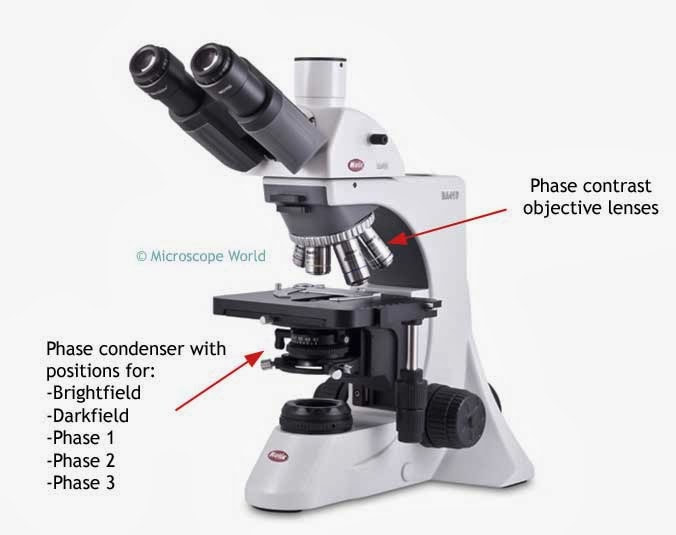- What magnification - or is more magnification better?
Most microscopes have 4x, 10x, 40x, and 100x objectives. Even in the cheapest microscopes, the lower objectives are good enough for wastewater. Where I have seen the big difference is in the 40x and 100x objectives. Remember the eyepiece magnifies an additional 10x or 15x depending upon the eyepiece. What is equally important as magnification is resolution - which is why high end lenses made by Olympus, Nikon, and Zeiss always seem to have more "crisp" images. For routine wastewater exam- such as looking at floc, protozoa and metazoa most microscopes will suffice. Filamentous ID benefits from better quality lenses. For wastewater exam purposes, objectives over 100x are not very useful. You should also know 100x objectives require the use of immersion oil with the objective. Immersion oil is low cost, but can be messy if users do not clean the objectives after use. Often I find the 40x objective (no immersion oil required) to be the most magnification needed for daily microscopic exam. - Brightfield (light), Darkfield, or Phase Contrast
Wastewater microorganisms are relatively clear and without staining, we do not see all their features when using brightfield microscopy. Adding phase contrast objectives allows viewing of minor changes in light refraction - which improves contrast. This is why professional microscopic exam pictures look so much better than on lower cost light microscopic views. Is phase contrast necessary? No, but the price for phase contrast condensers & objectives has dropped enough that I would recommend any new purchase include phase contrast and light field objectives. For wastewater, darkfield is not nearly as important as phase contrast. To learn more about phase contrast look here
www.microscopyu.com/techniques/phase-contrast/introduction-to-phase-contrast-microscopy.
- Light source & power
This used to be a big deal when we used old style bulbs. Most manufacturers now use halogen or LED light sources. Both last longer, with less heat, and good brightness than older bulbs. If I had a choice, I would go with LED but halogen is an excellent option too. - Mechanical stage
A mechanical stage allows for movement of the slide under the objective without touching the slide itself. All but the lowest end microscopes have mechanical stages - and unless your budget prevents it, get the mechanical stage. - Cover & case
Dust is a huge enemy! Even in relatively clean labs, dust accumulates on light sources, phase contrast "discs", and lenses. Cleaning with lens paper, compressed air, and cotton swabs are good practice, but my best hint is to get a good microscope cover for when the microscope is not being used. If you are going to travel or move the microscope often, get a case to protect the scope. - Maintenance
Periodically maintenance can be done at microscope repair shops - like Land, Sea & Sky - this includes taking the microscope completely apart to remove all dust, cleaning any "things" that get on the objectives, and adjusting the mechanical focus and stage mechanisms. The frequency of cleaning and maintenance all depends upon where the microscope is used, stored, and handled.
Resources for learning about microscopes:
- Zeiss has an excellent resource for microscope education - zeiss-campus.magnet.fsu.edu/index.html
While a commercial company, the FSU based Zeiss site gives good general information no matter which microscope you select. - Also many university microbiology departments have training resources for using microscopes - if you have been in an intro microbiology lab, you will remember the laboratory activities including cheap microscopes, dust covered lenses, and looking at various prepared slides. And, afterwards forgetting all the techniques that the instructors tried to teach.


 RSS Feed
RSS Feed